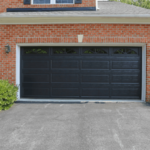Introduction
Owning a dog comes with countless rewards—loyal companionship, emotional support, and fun-filled daily routines. However, there’s one part of dog ownership that every pet parent must face: cleaning up after their furry friend. Whether you’re walking through your backyard or taking your dog for a stroll, managing pet waste is not just a matter of courtesy—it’s an essential part of responsible ownership. That’s where the importance of dog waste removal truly comes into play.
It’s easy to underestimate the consequences of uncollected pet waste, but leaving it behind can affect everything from the cleanliness of your environment to the health of your family. The tools, techniques, and even services available today have made cleaning up more convenient than ever before. What used to be an unpleasant chore has evolved into a manageable, efficient process—if you know how to do it right.
This comprehensive guide will explore the impact of improper waste management, the importance of maintaining a clean outdoor space, different methods and tools for effective cleanup, and why proper dog waste removal should never be ignored.
Why Pet Waste Cleanup Is More Important Than You Think
It might be tempting to assume that dog poop decomposes harmlessly into the soil, but the reality is quite different. Dog waste is biologically harmful and environmentally hazardous. Here’s why every dog owner should prioritize regular waste removal:
1. Harmful Bacteria and Parasites
Dog feces often contain harmful organisms such as E. coli, roundworms, salmonella, and Giardia. These can linger in the soil for weeks or even months, posing risks to other pets and humans—especially children who play in yards or grassy areas.
2. Environmental Contamination
When left unattended, dog waste can be swept into storm drains and nearby water sources during rain. This runoff contributes to the pollution of rivers, lakes, and oceans, introducing high levels of nitrogen and harmful pathogens into aquatic ecosystems.
3. Unpleasant Odors and Visual Mess
Accumulated pet waste not only creates a health hazard but also makes outdoor spaces less enjoyable. The smell can spread quickly, especially during warmer weather, and affect the overall cleanliness of your home and yard.
4. Legal and Community Standards
Many communities have ordinances that require dog owners to clean up after their pets. Failing to comply can result in fines and complaints from neighbors. Practicing responsible dog waste removal reflects positively on you and contributes to a better shared environment.
The Dog Waste Breakdown: What’s Really in It?
It might seem like all animal waste is natural and safe, but dog feces is more complex and hazardous than it appears. Unlike herbivores, dogs are omnivores, which makes their waste richer in harmful bacteria and proteins that don’t benefit the soil.
In fact, a single gram of dog feces can contain over 20 million fecal coliform bacteria. These pathogens are not only dangerous to humans but can also infect other pets. In short, dog poop doesn’t fertilize your lawn—it pollutes it.
Common Dog Waste Removal Methods
There are several ways to deal with pet waste, and the right method depends on your preferences, budget, and how many pets you have. Below are the most commonly used dog waste removal approaches:
1. Manual Pickup (Bag-and-Hand Method)
This method involves using disposable bags—often biodegradable—to pick up and dispose of waste directly. It’s simple, quick, and cost-effective, but it does require close contact and isn’t ideal for people with mobility issues.
2. Poop Scoopers
A popular alternative, scoopers come in various designs (clamp, rake, bin) and allow for hands-free waste collection. They’re especially useful for larger yards or when managing waste from multiple dogs.
3. In-Ground Waste Disposal Systems
These work similarly to mini septic systems. Waste is placed into the unit, where it’s broken down by enzymes and safely absorbed into the soil. They offer an eco-friendly solution but require some installation and maintenance.
4. Flushable Waste Bags
Designed for indoor convenience, these bags are safe to flush down toilets, making them ideal for urban living. However, they must be compatible with your plumbing system.
5. Dog Waste Removal Services
Hiring a professional dog waste removal service offers the ultimate convenience. These services typically provide weekly or bi-weekly visits to clean your yard, sanitize the area, and safely dispose of waste off-site.
This last option is especially valuable for busy pet owners or those with physical limitations, ensuring your space stays clean without lifting a finger.
How to Choose the Right Removal Solution
Selecting the right waste removal method depends on various factors:
- Number of dogs: More dogs = more waste. A scooper or removal service is more efficient than manual pickup.
- Yard size: Large outdoor spaces can be better managed with long-handled tools or in-ground systems.
- Physical ability: Not everyone can bend or squat easily. Hands-free tools and services are ideal in such cases.
- Frequency of cleanup: If you clean daily, quick-access methods like bag pickup work. For weekly cleanups, a scooper is preferable.
- Budget: Bag-based pickup is cost-effective. Services cost more but offer time-saving value.
No matter the approach, what matters most is consistency and proper disposal.
Best Practices for Sanitary Cleanup
Regardless of the tools or services you choose, these habits will help keep your outdoor space healthy and hygienic:
• Clean Regularly
Make a routine of picking up waste daily or at least several times a week. Letting it accumulate increases the risk of disease and odor.
• Use Gloves or Tools
Never handle waste directly, even if you use bags. Gloves or scoopers reduce your exposure to bacteria.
• Disinfect Tools
After each use, rinse tools with water and occasionally sanitize them to prevent contamination.
• Proper Disposal
Don’t toss pet waste into compost or yard waste bins unless they’re specifically labeled for it. Instead, dispose of it in sealed bags with your regular garbage or use dedicated waste systems.
Maintaining a consistent routine ensures a cleaner home and reduces health risks for pets and family members.
The Value of Professional Services
For pet owners who want a hands-off approach, dog waste removal services provide reliable, hygienic, and efficient solutions. These services are especially useful for:
- Busy professionals with limited time
- Seniors or individuals with mobility limitations
- Homes with multiple pets
- Families seeking a cleaner yard for children
Most services include waste pickup, odor control, yard deodorizing, and disposal, often on a weekly basis. Some even offer one-time cleanups for events or move-ins. Though it comes with a monthly cost, many pet owners find it well worth the investment for the convenience and peace of mind.
Environmental Impact and Sustainability
Cleaning up after pets is just one part of the equation—how we dispose of the waste matters too. To reduce environmental impact, consider the following:
- Biodegradable bags: These break down faster than regular plastic and are safer for landfills.
- Waste digesters: In-ground systems help convert waste into harmless components through enzyme action.
- Avoid flushing: Unless you’re using specifically designed bags, flushing pet waste can strain plumbing and harm water systems.
- Composting (with caution): While regular composting doesn’t kill all bacteria, specialized pet waste composters can treat the waste safely.
When paired with the right habits, dog waste removal becomes a sustainable part of everyday pet care.
Teaching Good Habits at Home
If you share your home with other adults, kids, or roommates, it’s essential to establish a shared responsibility for pet waste cleanup. Here’s how to build a cleanup culture:
- Assign roles: Create a rotating schedule to divide responsibilities fairly.
- Educate kids: Teach children the importance of cleanup, and supervise them with tools and gloves.
- Make tools accessible: Keep waste bags, scoopers, or bins in easy-to-reach places to encourage regular use.
- Reward consistency: Praise family members or housemates who stick to the cleanup plan.
Consistency, visibility, and simplicity are key to keeping waste under control.
Final Thoughts
Pet ownership brings immense joy, but it also brings responsibility—especially when it comes to managing waste. With so many tools and services available today, there’s no reason to let dog waste pile up or compromise the cleanliness of your outdoor space.
Whether you’re using bags, a poop scooper, an in-ground disposal system, or hiring a dog waste removal service, the most important thing is staying consistent and committed. By doing so, you’re protecting your family, your pets, and your environment.
The act of cleaning up after your dog might not be glamorous, but it reflects the kind of pet owner you are—caring, responsible, and mindful of others. In the long run, a cleaner yard leads to a healthier home and a happier life for everyone involved.

















